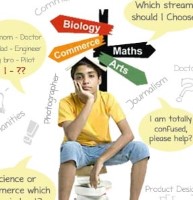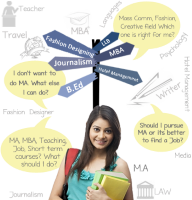Assessment for speaking and listening is a way to measure how well a person can communicate orally. It is important for language learners and speakers of all ages, as it helps to ensure that they are developing the skills they need to communicate effectively in real-world situations.
Introduction : ASL full form

Welcome to the world of assessing speaking and listening skills—a crucial dimension of effective communication. In this introduction, we’ll delve into the purpose, significance, and the audience for this assessment journey.
Purpose and Scope
The purpose of assessing speaking and listening skills is to evaluate an individual’s ability to communicate and comprehend information effectively through verbal means. This assessment helps in understanding how well a person can express thoughts, engage in conversations, and interpret spoken language.
Importance of Assessing Speaking and Listening
Speaking and listening are fundamental communication skills essential for success in education, career, and social interactions. Assessing these skills provides insights into an individual’s ability to convey ideas clearly, collaborate with others, and grasp information accurately.
Target Audience
This assessment is designed for learners of all ages and backgrounds. It caters to students in educational institutions, professionals in various fields, and anyone seeking to improve their verbal communication and comprehension abilities.
Assessment Goals and Criteria: ASL full form
Assessment Goals:
| Goal No. | Assessment Goal |
|---|---|
| 1 | Evaluate speaking and listening proficiency. |
| 2 | Assess communicative competence. |
| 3 | Measure comprehension and interpretation skills. |
| 4 | Determine the ability to engage in meaningful conversations. |
| 5 | Evaluate pronunciation, fluency, and intonation. |
| 6 | Assess vocabulary usage and language appropriateness. |
Assessment Criteria for Speaking:
| Criteria No. | Assessment Criteria for Speaking |
|---|---|
| 1 | Pronunciation and Intonation |
| 2 | Fluency and Coherence |
| 3 | Vocabulary and Language Use |
| 4 | Task Fulfillment and Organization |
Assessment Criteria for Listening:
| Criteria No. | Assessment Criteria for Listening |
|---|---|
| 1 | Comprehension and Understanding |
| 2 | Listening for Specific Information |
| 3 | Inference and Interpretation |
| 4 | Note-taking and Summarization |
Assessment Design and Methodology: ASL full form
1. Types of Assessments
- Formative Assessment: This is like a practice session. It helps us understand how well you’re doing while you’re learning. It’s like a checkpoint during your learning journey.
- Summative Assessment: Think of this like a final test. It helps us measure what you’ve learned over a period. It’s like the big moment where we see how well you’ve grasped everything.
2. Choosing How to Test You
- Conversations and Interviews: We’ll have a friendly chat to see how well you can express yourself and understand others. It’s like talking to a friend!
- Group Discussions: You’ll talk with others about a topic. It’s like a friendly gathering where we see how you communicate in a group.
- Oral Presentations: Imagine you’re telling a story to a group. We’ll see how engaging and clear you are while speaking to a larger audience.
- Listening Comprehension Tasks: We’ll play something for you to listen to, like a story or discussion. Then, we’ll ask questions to see how well you understood it.
3. Creating the Assessment Tools
- Rubrics: Think of this like a checklist. We’ve made a list of things we’re looking for, like how clearly you speak or how well you understand others. It helps us score your speaking and listening.
- Authentic Tasks: We’ve made tasks that resemble real-life situations. It’s like practicing in a safe environment before you step into the real world.
- Using Technology: Sometimes, we’ll use computers or devices to make the assessment more interesting. It’s like adding a fun twist to how we test you!
4. Giving the Test
- Preparing You: We’ll tell you what to expect and how to get ready. It’s like preparing for a game by knowing the rules.
- Creating a Comfortable Space: We want you to feel relaxed and at ease, so you can show us your best. It’s like arranging a cozy room to have a good conversation.
- Being Fair and Equal: We treat everyone the same way to make sure the assessment is fair. It’s like playing a game where everyone follows the same rules.
Development of Assessment Tools: ASL full form
Types of Assessments:
| Assessment Type | Description |
|---|---|
| Formative Assessment | Like practice sessions during learning to understand progress. It’s a friendly checkpoint along your learning journey. |
| Summative Assessment | Similar to a final test, measuring what you’ve learned over a specific period. It’s the big evaluation at the end to see how well you’ve grasped everything. |
Assessment Methods:
| Assessment Method | Description |
|---|---|
| Conversations and Interviews | Friendly discussions to assess expression and comprehension. It’s like having a chat with a friend. |
| Group Discussions | Conversations in groups to evaluate communication within a team. Similar to a friendly gathering to discuss a topic. |
| Oral Presentations | Speaking to a larger audience, evaluating engagement and clarity while presenting information. Like sharing a story or idea with a group. |
| Listening Comprehension Tasks | Listening to a passage or discussion and answering questions to measure understanding. It’s like listening to a story and then discussing it. |
Administering the Assessment: ASL full form
- Getting Ready: The Preparation Phase Before the assessment, we’ll give you a heads-up! It’s like knowing when the big game is. We’ll tell you what to expect and what to do to prepare. Just like a coach briefing the team before a match!
- Creating a Nice Space: The Assessment Environment We want you to be comfortable. So, we’ll set up a cozy, quiet room. It’s like arranging your favorite corner with comfy pillows and good lighting. We want you to feel at ease, just like having a nice chat with a friend.
- Starting the Test: Let’s Begin! When it’s time for the assessment, we’ll explain everything. It’s like the referee explaining the rules before the game starts. We’ll let you know what you need to do and answer any questions you have.
- Listening and Speaking: Show What You Know During the assessment, we’ll listen to you carefully. It’s like having a good listener when you’re sharing a story. We’ll ask questions, and you’ll get to express yourself, just like having a conversation.
- Finishing Up: That’s a Wrap! When the assessment is done, it’s like the game ending. We’ll thank you for participating and let you know what comes next. It’s like the players shaking hands after a match. We’ll provide feedback, so you know how you did and how you can improve for next time.
Practical Implementation: ASL full form
Preparing for the Assessment:
| Step | Description |
|---|---|
| 1 | Define assessment objectives and outcomes. |
| 2 | Design assessment components and guidelines. |
| 3 | Develop speaking and listening tasks and materials. |
Conducting the Assessment:
| Step | Description |
|---|---|
| 1 | Arrange a suitable assessment venue with audio equipment. |
| 2 | Brief participants on the assessment process and expectations. |
| 3 | Administer speaking tasks and evaluate performances. |
| 4 | Administer listening tasks and evaluate comprehension. |
Evaluation and Feedback:
| Step | Description |
|---|---|
| 1 | Collect and compile assessment scores for analysis. |
| 2 | Analyze assessment data to identify trends and areas for improvement. |
| 3 | Provide individualized feedback to participants. |
Benefits
Improves Communication Skills: Regular assessment helps people turn out to be extra powerful communicators by means of identifying strengths and regions for development of their talking and listening capabilities.
Enhances Confidence: Feedback from assessments can improve self-self assurance as individuals apprehend their progress and recognize their abilties in actual-global verbal exchange eventualities.
Facilitates Personalized Learning: Assessments provide insights into individual gaining knowledge of wishes, taking into account tailored preparation and centered exercise to deal with unique weaknesses.
Promotes Active Listening: Assessing listening competencies encourages people to be more attentive and engaged, main to better expertise and retention of records.
Strengthens Critical Thinking: Evaluating speakme and listening fosters important questioning by means of requiring people to organize their thoughts coherently and reply thoughtfully to others.
Encourages Effective Interaction: Regular assessment helps improve interaction abilties by way of promoting powerful responses, clarification techniques, and engagement with others throughout conversation.
Supports Professional Development: For experts, assessing those abilities is critical for roles that involve shows, negotiations, and purchaser interactions, thereby enhancing normal process performance.
Process
- Define Objectives
Purpose: Determine what specific components of speakme and listening you want to assess (e.G., fluency, pronunciation, comprehension).
Criteria: Establish clear, measurable criteria for evaluation primarily based on the goals.
2.Develop Assessment Tools
Rubrics: Create a detailed rubric outlining the standards for every talent, with unique descriptors for exclusive overall performance stages.
Checklists: Develop checklists for brief exams of key factors, including pronunciation accuracy or comprehension of key points.
3. Select Assessment Methods
For Speaking: Consider strategies like oral presentations, role-plays, debates, or interviews.
For Listening: Use strategies inclusive of listening comprehension sports, observe-taking duties, or interactive listening sports.
4. Prepare the Assessment
Materials: Gather or create any essential substances (e.G., scripts, audio recordings, prompts).
Environment: Ensure that the evaluation environment is conducive to correct evaluation (e.G., minimal distractions, suitable era).
5. Conduct the Assessment
Instructions: Clearly provide an explanation for the assessment tasks and criteria to contributors.
Execution: Observe and report performance in line with the established criteria, making sure consistency and equity.
Conclusion
The Assessment for Speaking and Listening serves as a pivotal tool in evaluating an individual’s communication proficiency. It navigates the intricate domains of speaking and listening, two fundamental skills that underpin effective human interaction. This assessment, designed with careful consideration and a clear set of objectives, seeks to measure an individual’s ability to articulate thoughts coherently and comprehend spoken language.
Key Takeaways:
- Skillful Communication Evaluation: The assessment meticulously examines speaking and listening abilities, encompassing pronunciation, fluency, vocabulary usage, comprehension, and interpretive skills. It offers a comprehensive snapshot of an individual’s communicative competence.
- Holistic Approach: By adopting a multifaceted approach, the assessment provides a well-rounded evaluation. It does not merely assess the surface aspects of speaking and listening but delves deeper, considering nuances such as intonation, fluency, and linguistic accuracy.
FAQs
Q1: What is the purpose of assessing speaking and listening skills?
A: To evaluate and improve individuals’ ability to communicate effectively and understand spoken information.
Q2: How do I define the criteria for assessment?
A: Based on the specific skills you want to evaluate, such as fluency, coherence, pronunciation, or comprehension.
Q3: What tools can I use for assessment?
A: Rubrics, checklists, oral presentations, role-plays, listening exercises, and interactive activities.
Q4: How can I ensure fairness in the assessment?
A: Use clear criteria, consistent scoring, and a standardized environment for all participants
Q5: What should be included in feedback?
A: Specific observations about strengths and areas for improvement, along with actionable suggestions for enhancement.



















